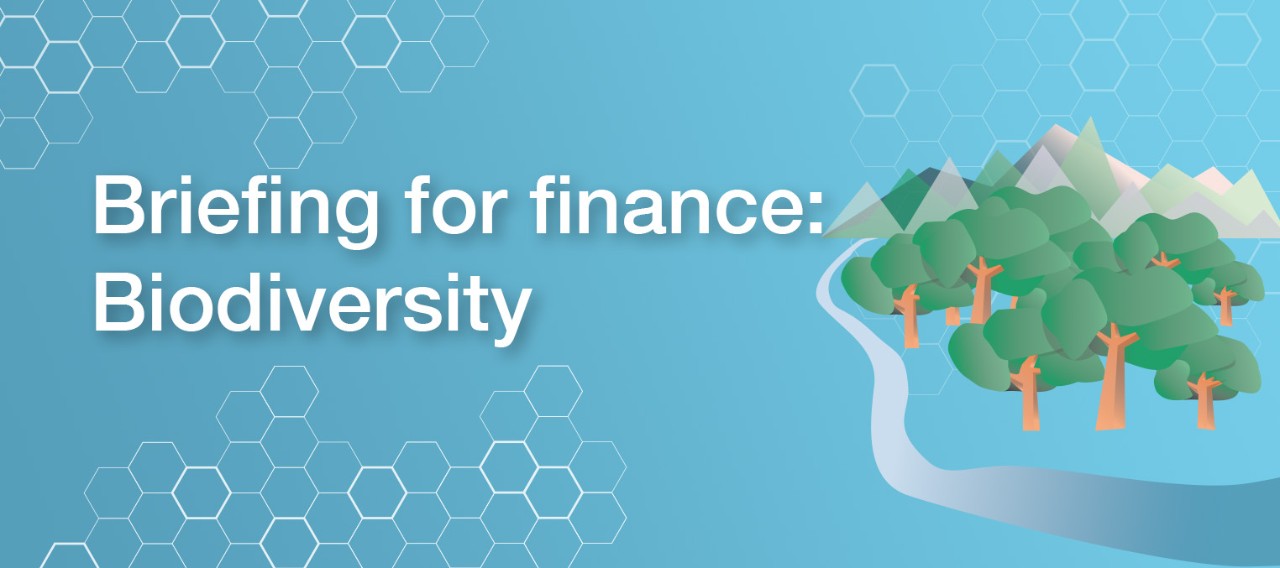Key Outcomes from the COP15 UN Biodiversity Conference

What was COP15?
Similar to the UN Climate Conferences, representatives from governments around the world met to discuss actions that need to be taken by the global community to halt and reverse biodiversity loss. The largest biodiversity conference in a decade, COP15, was held in Montreal, Canada from 7th to 19th December 2022, with China presiding over the proceedings.
What was agreed?
A new Global Biodiversity Framework with 23 action orientated targets to be initiated immediately and completed by 2030.
These include the need to put measures in place to require all large and transnational companies and financial institutions to:
- Regularly monitor, assess and transparently disclose their risks, dependencies and impacts on biodiversity, along their operations, supply and value chains and portfolios.
- Provide information needed to allow consumers to promote sustainable consumption patterns.
The aim of these measures is to reduce biodiversity-related risks to business and financial institutions, and promote actions to ensure sustainable patterns of production (target 15).
The agreement also includes commitments to:
- Remove environmentally harmful subsidies (target 18).
- Move to sustainable use of biodiversity with protection of at least 30 percent of the earth’s land and sea areas by 2030, especially areas of particular importance for biodiversity (target 3).
- Reduce pollution, including eliminating plastic pollution; and ensuring food production is sustainable (targets 7 and 10).
What does this mean for business?
Governments and regulators will be looking at how they can translate the COP15 agreement into national action, with business key to delivering the pledges in practice. This will mean increasing focus on local nature preservation, policies that encourage sustainable use of biodiversity and a move to mandatory disclosures by large organizations. There is also likely to be increasing standardization of methodologies and frameworks to help organizations deliver on these requirements.
All sectors and organizations are likely to be impacted by these changes, whether directly or through your value chain. Conservation alone will not be enough to reverse biodiversity loss: a transition to sustainable consumption and production models will be required.
What should my organization be doing now?
Businesses and financial institutions must adopt strategies across their value chain to seek to reduce their negative and increase their positive impacts on biodiversity, with the aim to drive a nature positive economy.
This begins with an understanding of your current links to nature, positive and negative. Tangible things your organization can start doing now include:
Assess – measure and value
- Understand your natural capital-related impacts, risks and opportunities, and dependencies over the short-, medium- and long-term and at an appropriate level eg entity / product / area. Identify interactions with low integrity ecosystems, high importance ecosystems or areas of water stress.
- Consider all relevant parts of your value chain – as with carbon, your most significant areas maybe outside your direct operations. Seek measures consistent and comparable with financial capital where needed. Information should be in a format most useful for decision making, likely to be a range of qualitative, quantitative and monetized information used depending upon use, relevance and robustness of data available.
- Consider the impacts on and of the organization and include a wide range of stakeholders to inform the assessment process.
Commit – set targets and update governance
- Set transparent, time-bound, specific science-based targets for all material impacts and dependencies. During this process ensure you understand your baseline. Guidance on science-based targets for nature is due out in early 2023 from the Science Based Targets Network, with the draft available now.
- The board should actively consider and take responsibility for natural capital related issues. This responsibility should filter down through the organization, eg through incentivization schemes and budgeting processes.
- Undertake any necessary capacity building so that senior leadership and the finance team have necessary knowledge and skills in this area.
- Ensure alignment between targets for nature and climate, with an understanding of any trade-offs.
Transform – update decision making, strategy and business models
- Ensure decision making includes natural capital information alongside financial and other capitals as part of an integrated capitals approach.
- Integrate natural capital related impacts, risks and opportunities, and dependencies into your overall risk management and strategy alongside other capitals, including use of scenario planning. Include in Risk Appetite statements.
- Advocate for action to reverse loss of natural capital and collaborate with peers and other stakeholders to achieve change including within your value chain.
- Assess your organization’s maturity and develop a roadmap for action by completing the A4S natural capital maturity map, exploring the key actions that finance can take.
- Explore the A4S Essential Guide series to identify additional tools and approaches you can adopt to embed natural capital into decision making.
Disclose – information for investors and wider stakeholders
- Include natural capital disclosures in your annual report and accounts in line with the recommendations of the latest draft of the Taskforce for Nature Related Financial Disclosures (TNFD).
- Respond to GRI’s exposure draft of its revised Biodiversity Standard, open for public comment until 28th February 2023.
- Undertake verification / assurance of material disclosures.



